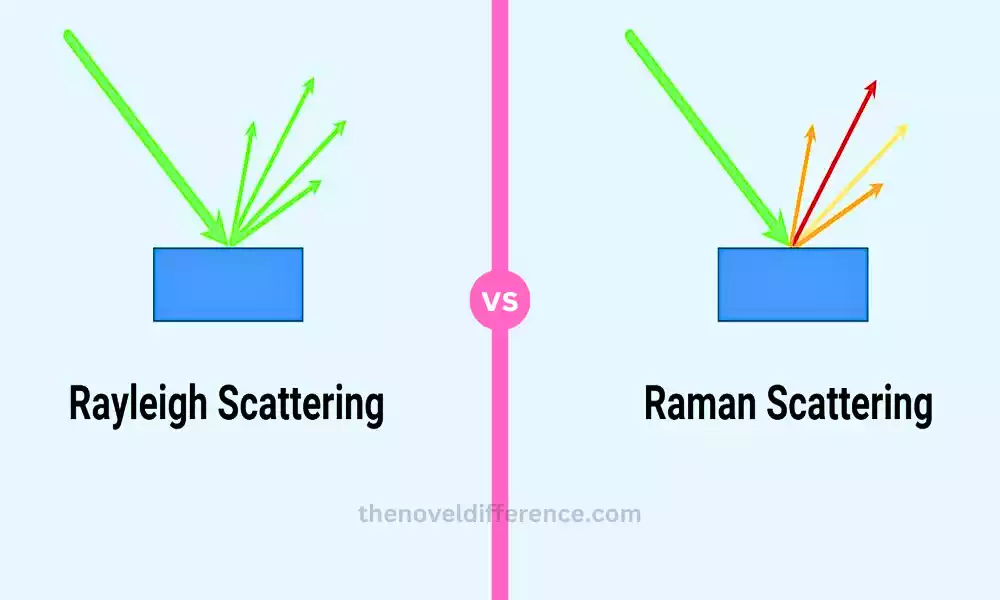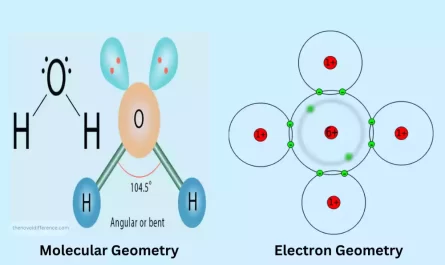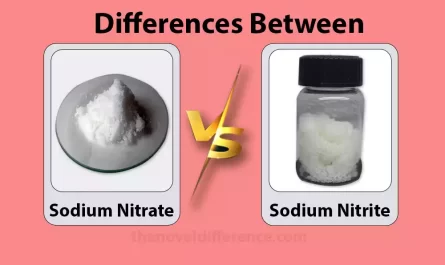When it comes to the study of light and its interaction with matter, two fascinating ideas emerge. Both of these phenomena provide valuable insight into the behavior of light in different media.
Understanding the difference between Rayleigh and Raman scattering is important not only in optics, but also for various applications in chemistry, physics, and even atmospheric science. In this comprehensive guide, we’ll dive deep into the intricacies of both scattering processes. Let’s uncover their differences and explore their practical implications.
Importance of Rayleigh Scattering
Rayleigh scattering is of profound importance both in atmospheric science and in the fundamental understanding of light-matter interactions. This phenomenon plays an important role in forming the color of our sky. which gives rise to a vivid blue color during daylight hours.
Scatters shorter wavelengths of sunlight more efficiently than longer wavelengths. Rayleigh scattering is responsible for the mesmerizing glow of clear skies. This scattering phenomenon has a significant impact on astronomy. Aids in the interpretation of celestial colors and provides insight into the composition and condition of distant objects.
In the broader context of optics and materials science, Rayleigh scattering provides valuable insight into the behavior of electromagnetic waves when interacting with matter. Contributes to advances in areas such as optical communication and remote sensing technology. So, a comprehensive understanding of Rayleigh scattering enhances our knowledge of the natural world and paves the way for practical applications across various scientific domains.
Importance of Raman Scattering
Raman scattering stands as a cornerstone in the field of spectroscopy and material properties. which play an important role in unraveling the complex molecular structures and vibrational dynamics of materials. This phenomenon provides a unique window into the vibrational modes of molecules. which allows scientists to identify and analyze elements with exceptional precision.
Raman spectroscopy, built on the principle of Raman scattering, has found wide application in various fields. In chemistry, it enables the identification of unknown compounds and the observation of chemical reactions. While in pharmaceuticals, it helps in quality control and drug development. Raman scattering has proven invaluable in studying biological samples. Helps elucidate molecular interactions and contributes to advances in medical diagnosis and research.
Its significance extends to materials science, nanotechnology, and even cultural heritage conservation, where Raman spectroscopy helps assess the structure and condition of historical artifacts. Provides insight into molecular vibrations and interactions. Raman scattering empowers scientists and researchers with a powerful analytical tool. which crosses disciplinary boundaries and drives progress across a spectrum of scientific and industrial applications.
What is Rayleigh Scattering?
Rayleigh scattering is a fundamental optical phenomenon that describes the scattering of light by particles or molecules much shorter than the wavelength of the incident light. Named after British scientist Lord Rayleigh, this process involves the elastic scattering of electromagnetic waves. such as visible light or other forms of electromagnetic radiation, by atoms or molecules without any significant change in their energy.
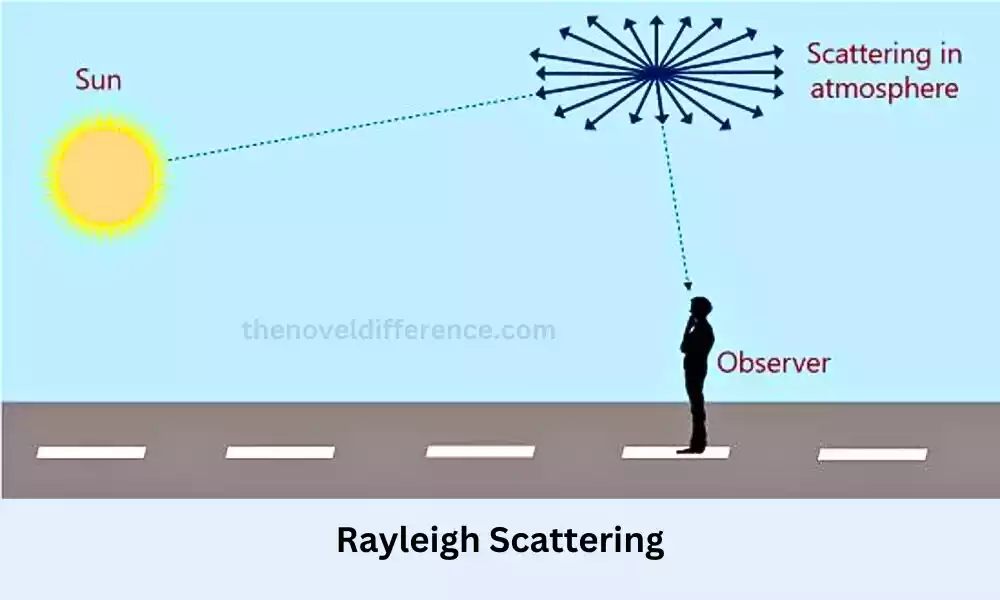
The interaction between the incoming electromagnetic wave and the particle induces a temporary polarization between the particles. This results in the re-emission of light in all directions. Rayleigh scattering is most efficient at scattering shorter wavelengths (blue and violet light) than longer wavelengths (red and yellow light).
That is why the sky looks blue during the day. This scattering phenomenon plays an important role in the interpretation of atmospheric optics, sky color, and celestial color. which influenced fields from meteorology to astronomy and formed the basis of various optical technologies.
What is Raman Scattering?
Raman scattering, Indian physicist C.V. A remarkable optical phenomenon named after Raman. which is a form of elastic light scattering that provides invaluable insight into the molecular structure and vibrational properties of materials. When light interacts with matter. A small fraction of the scattered light then undergoes energy changes due to interactions with molecular vibrations.
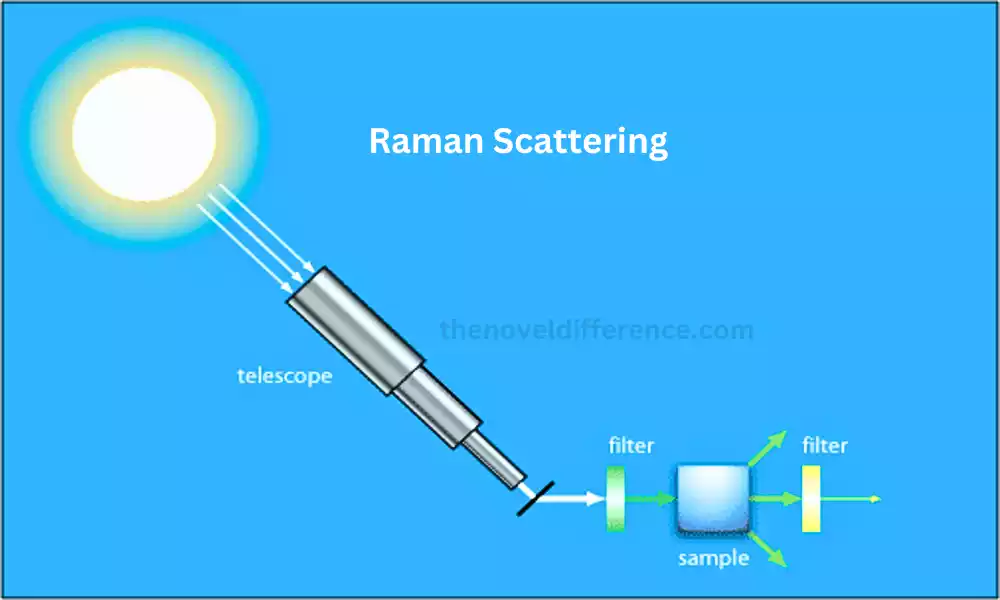
This change results in a unique spectral pattern known as the Raman spectrum. which acts as a molecular fingerprint for the substance under investigation. Built on the principles of Raman scattering, it has revolutionized fields such as chemistry, biology, and material science. By analyzing specific vibrational modes of molecules, scientists can identify unknown compounds.
Can monitor chemical reactions, and examine molecular interactions in complex systems. Raman scattering has enabled advances in drug development, forensic analysis, and the study of biological structures. which provides a non-destructive and versatile analytical tool with a wide range of applications from basic research to industrial and medical applications.
Difference Between Rayleigh and Raman Scattering
| Aspect | Rayleigh Scattering | Raman Scattering |
|---|---|---|
| Type of Scattering | Elastic scattering | Inelastic scattering |
| Interaction | Polarizability of molecules | Vibrational modes of molecules |
| Energy Change | No energy shift | Energy shift due to vibrational modes |
| Wavelength Dependence | Scatters shorter wavelengths more | Wavelength-independent scattering |
| Intensity | Intensity proportional to frequency^4 | Weaker intensity than Rayleigh scattering |
| Applications | Sky color, astronomy | Molecular identification, material analysis |
| Significance | Atmospheric optics, the color of the sky | Molecular structure, materials analysis |
| Example | Blue sky phenomenon | Vibrational peaks in Raman spectra |
Please note that this chart provides a simplified comparison and that both scattering phenomena have more complex properties and applications beyond what’s summarized here.
Future Developments and Challenges
Future Developments:
- Advanced Spectroscopic Techniques: Both Rayleigh and Raman scattering techniques continue to benefit from advancements in spectroscopic instrumentation. Improved sensitivity, resolution, and signal-to-noise ratios are expected to enhance the accuracy and range of applications for these methods.
- Nanotechnology Integration: Rayleigh and Raman scattering are increasingly being applied in nanotechnology for characterizing nanoparticles, nanomaterials, and nanoscale structures. Future developments might include the refinement of techniques to study nanoscale phenomena with greater precision.
- Combining Spectroscopic Methods: Researchers are exploring hybrid approaches that combine Raman spectroscopy with other techniques, such as infrared spectroscopy or mass spectrometry, to provide more comprehensive molecular information and overcome limitations.
- Quantum Mechanics Simulations: Quantum mechanics simulations are becoming more powerful and accessible. These simulations can aid in better understanding the underlying physics of both scattering phenomena, enabling more accurate predictions and interpretations.
- In Vivo and Real-Time Applications: Raman spectroscopy holds potential for non-invasive in vivo applications in medical diagnostics, offering real-time insights into tissue composition and disease detection. Advancements in this direction could lead to more widespread clinical use.
Challenges:
- Signal-to-Noise Ratio: Raman scattering signals are inherently weak, making it challenging to detect and distinguish from background noise. Developing techniques to enhance signal strength and suppress noise remains a critical challenge.
- Fluorescence Interference: Fluorescence signals can overlap with Raman signals, especially in biological samples. Overcoming this interference requires innovative approaches to selectively detect Raman signals while minimizing fluorescence.
- Sample Compatibility: Both techniques require specific sample preparation and handling. Adapting these methods to a wide range of sample types and conditions without altering the sample’s characteristics remains a challenge.
- Spatial Resolution: Achieving high spatial resolution in Raman imaging is a challenge due to diffraction limits. Efforts are ongoing to push the boundaries of spatial resolution for improved characterization of nanoscale structures.
- Complex Samples: Analyzing complex mixtures or heterogeneous samples can complicate interpretation. Developing methods to accurately analyze mixtures and differentiate components is an ongoing challenge.
- Quantitative Analysis: Accurate quantitative analysis using Raman spectroscopy requires robust calibration methods and accounting for potential matrix effects. Developing standardized calibration approaches is essential for reliable results.
- Cost and Accessibility: Advanced spectroscopic instrumentation can be expensive, limiting accessibility, especially in resource-constrained environments. Efforts to reduce costs and enhance instrument portability are important for broader adoption.
As technology continues to evolve, so will the capabilities and applications of Rayleigh and Raman scattering. Overcoming challenges and pushing the boundaries of these techniques will contribute to their ongoing relevance in scientific research, industrial applications, and medical advancements.
Conclusion
The difference between Rayleigh and Raman scattering is most important. Rayleigh scattering brings us blue skies and plays an important role in atmospheric science. Raman scattering uncovers hidden molecular vibrations. which defines chemical compositions. As we continue to explore the interactions between light and matter. These sporadic events will undoubtedly pave the way for new scientific discoveries and innovative applications. which will enrich our understanding of the world around us.

